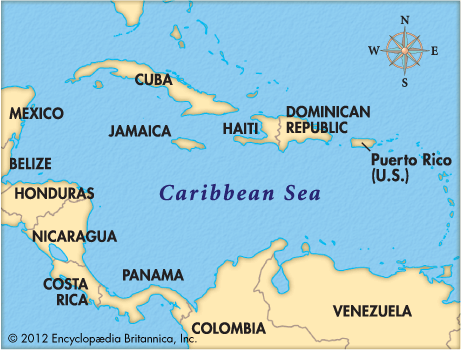
The four largest islands of the Antilles—Cuba, Hispaniola (divided into the Republic of Haiti in the west and the Dominican Republic in the east), Jamaica, and Puerto Rico—lying north of the Lesser Antilles chain in the Caribbean Sea constitute the Greater Antilles. They make up nearly 90 percent of the total land area of the entire West Indies.

